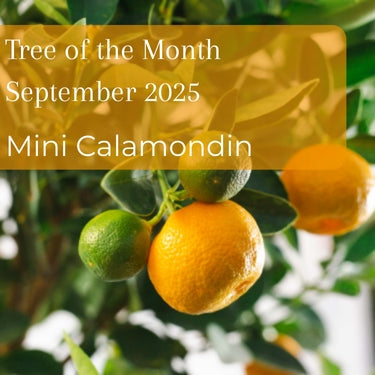The weather is becoming milder and the garden is waking from its winter slumber. Prep your garden for the beginning of spring and all the new life that comes with it.
Check out our list of Gardening Jobs for March and see what you have left to do in the garden this month.
Prepping the Garden for Spring
If your grass has started growing quite quickly and it requires a trim, wait for a dry day to do it and set the blades on your lawnmower to their highest setting.
It’s also a great time to lay new turf for your lawn, if the ground is frozen, wait till the weather and soil warms slightly and then lay it down.
If green patches of algae have started to appear on your paths and patios make sure to clean these away to keep walkways from becoming slippery. They can be scrubbed with a brush or jet washer.
Preparing Soil and Tidying Beds in March
While the rest of our trees and plants come back to life this also means there will be an onslaught of weed growth. Check beds and borders regularly, removing any that start to sprout. These can be added to the compost bin.
As the soil warms and becomes workable again, add some well-rotted manure or compost to the surface and dig it through the first few centimetres of topsoil. This will add back some well-needed nutrients for the growing season.
Potted plants lose nutrients much quicker than those planted in the ground. Repotting or adding a new layer of compost to your containers will add back the required minerals. To top-dress a pot just remove the first couple of inches of soil and replace with new compost.
Mulching in March
Mulch borders and beds in March when the soil is moist. This is a great way to preserve soil moisture content, add nutrients and prevent new weed growth.
The mulch will also add protection for root systems in case of any late cold weather and frosts.
You can choose from a wide variety of mulching material from leaf mould and bark chippings to well-rotted manure and compost.
Watering Trees and Plants in March
Still keep watering to a minimum until the weather becomes milder, if there is a particularly dry spell then make sure not to let compost or soil dry out.
Pruning Trees and Plants in March
Pruning roses in March is the perfect way to encourage new growth and give a strong start to the season before flowering.
Now is the time to prune your gooseberry plants for shape and to thin out some extra growth. Doing so will provide a better yield and higher quality crop. Make sure to prune to upwards facing buds. Be mindful of thorns and wear gloves if you need protection.
Avoid pruning your evergreens until next month. Evergreen varieties use their leaves to provide much-needed energy for growth in a warmer season.
Dealing with Pests in March
Slugs and snails are suckers for the new spring growth. Keep them at bay to protect your new tender plants.
Avoid using slug pellets and pesticides and aim for a more natural approach. Try encouraging wildlife like birds into the garden or try removing them by hand.
Slugs and snails may be the least of your worries as the weather becomes milder. Keep your eye out for things like aphids and caterpillar that will also make easy work of the new growth. If the infestation is caught early enough it can usually be treated by hand meaning you can avoid nasty pesticides altogether.
Planting in March
Continue planting bare root and container grown rose bushes.
Choose a sunny sheltered spot in the garden to plant any fruit trees such as apples and pears. Stoned fruit trees such as cherries can also be planted now.
Transplant any deciduous trees that need to be moved before they come out of their dormancy. If you do not wish to disturb your trees this late in the season then start preparing them for next year.
Continue to plant deciduous trees and plants this month, try not to leave it any later than this to plant. Any newly planted tree should have mulch placed around the base or the soil topdressed. If you have been working on making your own compost and it’s ready then this would be a great time to use it.
What to Harvest in March?
Keep evergreen herbs such as rosemary, lavender and thyme close to the back door for ease of use year round.
Evergreen Bays can also be harvested from year-round for use in the kitchen.
Protecting your Plants in the Winter
Continue protecting fruit trees with early spring blossom. Horticultural fleece can be used to protect them from frost and cold spells.
Protect any tender new growth from the onset of late cold weather, snow and frost.
Feeding your Plants in March
Give trees and hedges a slow release fertiliser by lightly digging into the soil.
As rose bushes start to grow, feed them with a special rose feed or add a balanced fertiliser to the soil.
Blueberries will benefit from an ericaceous feed at this time of year.
What’s Looking Good in March?
Magnolia trees can start blooming as early as February but early spring is when they really come to life, they are usually the first trees to show some new life and the large blooms will add beautiful colour to an outdoor space.
Our March Tree of the Month is the Star Magnolia, it will be coming into bloom very soon and will be a great addition to any garden.
Both flowering and fruiting cherry trees will start to bloom from mid to late March and will fill the garden with petite cherry pink and white blossoms.
Encouraging Wildlife in March
As the plants are waking up so is the local wildlife. Birds will be looking for places to nest and many other animals will be coming out of hibernation.
Create your own habitats such as insect hotels or bird boxes to attract beneficial wildlife. Bundling bamboo stems together creates great homes for solitary bees that will be looking for a place to rest. They are great pollinators so an important insect to bring to the garden.
Create a bee-friendly garden full of pollen and nectar-rich plants. Butterflies will also enjoy these plants.
Tie organic matter such as twigs, moss and even pet hair to washing lines for birds to collect and make cosy little nests from ready to lay their eggs.
Leave food out for hedgehogs coming out of hibernation. They will be hungry after their long sleep and will want to build up their fat supplies. Meaty cat or dog food is the perfect meal for them to chow down on. Leave out from dusk and bin whatever is left in the morning.
Indoor Gardening tips for March
Citrus trees require feeding throughout the year, from late March transition from using your winter citrus feed to a summer citrus feed which contains a higher level of nitrogen.
March is also a great time to repot any of your citrus trees that are in need of new compost or ones that may have become rootbound.
As the daylight increases, this will encourage houseplants to put out new growth. Watering can start to increase again as most come into their growing season. Keep compost moist, not wet. Add feed as necessary.


